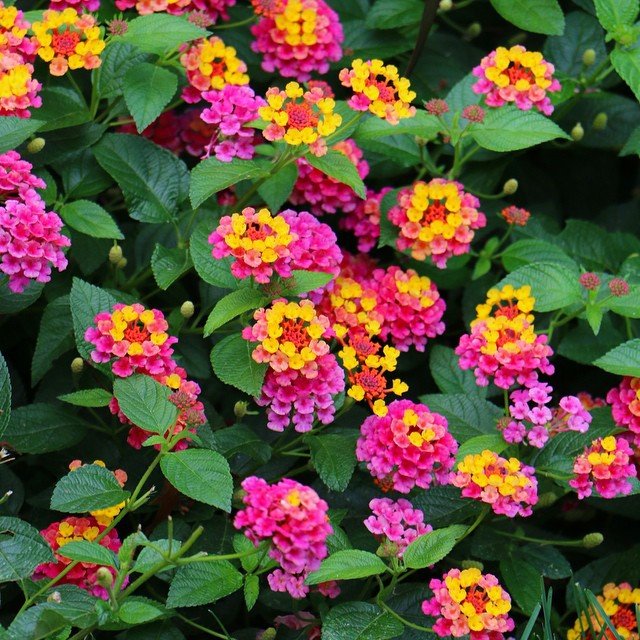Discover how to grow and care for Lantana Confetti! Learn expert tips on planting, maintenance and pest management to enjoy vibrant blooms all season long. Perfect for garden enthusiasts and beginners alike.
Lantana Confetti is a stunning and vibrant flowering plant that adds a burst of color to any garden or landscape. In this guide, I’ll share my expertise on how to grow, care for, and maintain this beautiful plant, ensuring it flourishes in your garden.
As a passionate gardener with years of experience, I can confidently say that Lantana Confetti is one of the most colorful and hardy plants you can choose for your outdoor space. With its bright, multicolored blooms, this plant not only enhances the beauty of your garden but also attracts butterflies and other pollinators.
Here’s an easy-to-read chart for Lantana ‘Confetti’:
| Category | Information |
|---|---|
| Botanical Name | Lantana camara ‘Confetti’ |
| Common Name | Lantana ‘Confetti’ |
| Plant Type | Perennial (grown as annual in cooler zones) |
| Hardiness Zone | USDA Zones 9–11 (annual in cooler zones) |
| Sun Exposure | Full Sun |
| Soil Type | Well-drained, sandy or loamy soil |
| Watering | Low to moderate; drought-tolerant |
| Growth Habit | Mounding, spreading |
| Height/Spread | 1–2 ft tall / 2–4 ft wide |
| Special Features | Vibrant multicolored flowers, attracts pollinators, drought-tolerant, long blooming season, deer-resistant |
Why Choose Lantana Confetti?

- Vibrant Blooms: The colorful clusters of flowers can range from yellow to orange and pink, creating a lively display throughout the growing season.
- Drought-Tolerant: Once established, Lantana Confetti requires minimal watering, making it a low-maintenance option for busy gardeners.
- Attracts Pollinators: This plant is a favorite among butterflies and bees, contributing to a healthy garden ecosystem.
Understanding Lantana Confetti
Botanical Information
- Scientific Name: Lantana camara
- Family: Verbenaceae
- Native Habitat: Originally from the tropical regions of the Americas and Africa.
Lantana Confetti is characterized by its small, tubular flowers that bloom in clusters, making it a popular choice for both borders and containers.
Growing Lantana Confetti
Choosing the Right Location
- Light Requirements: Lantana Confetti thrives in full sun, requiring at least 6 hours of direct sunlight daily. This promotes healthy growth and abundant blooms.
- Soil Requirements: This plant prefers well-draining soil that is slightly acidic to neutral (pH 6.0-7.0). Sandy or loamy soils are ideal.
Planting Process
- Timing: The best time to plant Lantana Confetti is in the spring after the last frost.
- Spacing: Space plants about 12 to 24 inches apart to allow for their bushy growth habit.
- Planting Depth: Dig a hole twice the width of the root ball and the same depth, placing the plant at the same level it was in the container.
For more detailed planting instructions, visit the American Horticultural Society.
Caring for Lantana Confetti
Watering
- Watering Schedule: Water thoroughly when the top inch of soil feels dry. Once established, Lantana Confetti is drought-tolerant and requires less frequent watering.
- Mulching: Apply a layer of mulch around the base to help retain moisture and suppress weeds.
Fertilizing
- Fertilizer Type: Use a balanced, slow-release fertilizer in early spring to promote healthy growth and blooms. Avoid over-fertilizing, as it can lead to excessive foliage at the expense of flowers.
Pruning
- Pruning Schedule: Prune Lantana Confetti in early spring to shape the plant and remove any dead or damaged branches. This encourages bushier growth and more blooms.
Pest and Disease Management
Common Pests
- Aphids: Use insecticidal soap or neem oil to control aphid infestations.
- Spider Mites: Increase humidity around the plant or use a mild insecticidal soap for treatment.
Diseases
- Powdery Mildew: Ensure good air circulation around the plant to prevent this fungal disease. If necessary, treat with a fungicide.
For more information on pest and disease management, visit University of California’s IPM.
Landscape Uses
Lantana Confetti is versatile in landscaping:
- Borders and Edges: Perfect for borders along pathways or garden beds.
- Containers: Thrives in pots, adding color to patios and balconies.
- Wildlife Gardens: Its nectar-rich flowers attract butterflies and hummingbirds.
Environmental Benefits
Lantana Confetti offers several ecological benefits:
- Pollinator Support: Provides a crucial nectar source for butterflies and bees.
- Erosion Control: Its deep root system helps stabilize soil and prevent erosion.
Learn more about the benefits of native plants from the Native Plant Society.
Lantana Confetti is a colorful and resilient addition to any garden. With proper care, including adequate sunlight, well-draining soil, and minimal watering, you can enjoy vibrant blooms throughout the growing season. This plant not only enhances your outdoor space but also contributes to a healthy garden ecosystem.
For more information on plant care and gardening tips, visit Gardening Know How.